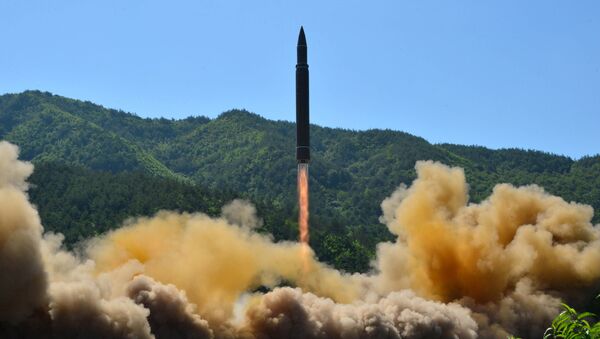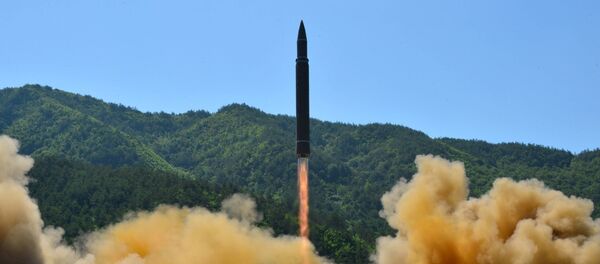WASHINGTON (Sputnik) — Earlier in the day, Japanese NHK reported that North Korea appears to have fired a missile which may have landed in Japan's exclusive economic zone. Later in the day, South Korean military confirmed the launch. The Pentagon said that it has detected what it considers to be a ballistic missile launch by the DPRK.
"We assess that this missile was an intercontinental ballistic missile, as had been expected," Davis said. "The missile was launched from Mupyong-ni and traveled about 1000 km before splashing down in the Sea of Japan."
The US military initially detected and tracked the missile at 10:40 a.m. EST (2:40 p.m. GMT), Davis said, and is working with international partners for a more detailed assessment.
Moreover, South Korean military also believes the North Korean missile was an ICBM, which flew about 1,000 kilometers, according to Yonhap. According to the report, South Korean military believes Pyongyang has fired an ICBM-class missile, which is more advanced than the one that was test-launched on July 4.
DPRK's move appears to be the first missile launch carried out by Pyongyang after its first successful ICBM test as North Korea and the US describe it.
On July 4, North Korea announced it had successfully launched its first intercontinental ballistic missile, saying it traveled 580 miles and reached an altitude of 1,740 miles during its 39-minute flight before accurately hitting a targeted area in the Sea of Japan. The test immediately prompted sharp criticism from the international community.
Following the launch, the Russian Defense Ministry disputed Pyongyang's claim, saying the missile's flight parameters indicated it reached an altitude of 535 kilometers (332 miles) and traveled 510 kilometers before falling in central Sea of Japan. However, US officials believe that Pyongyang had successfully launched an ICBM for the first time.




